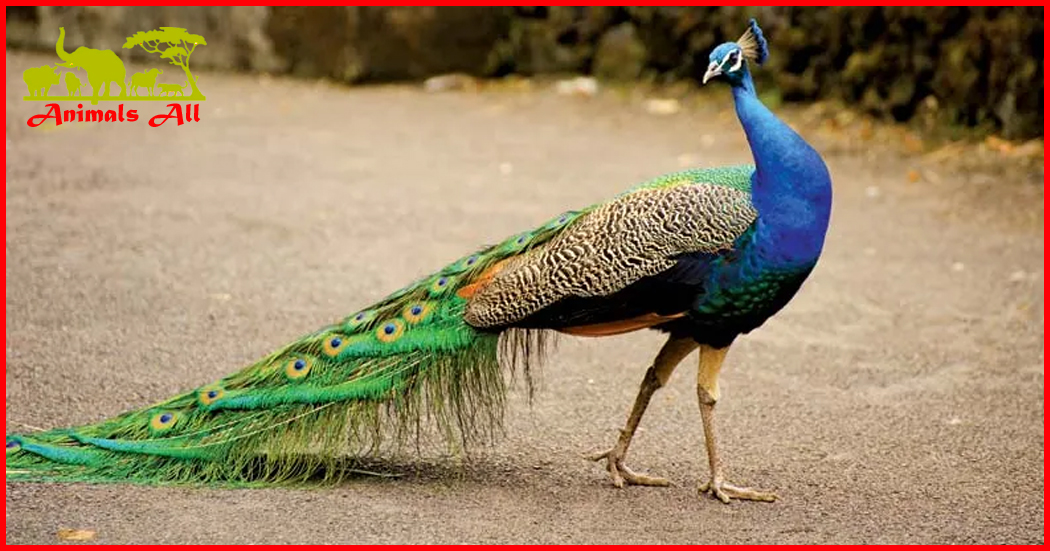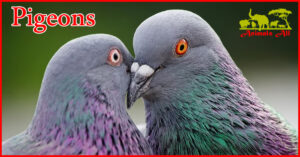
Why do peacock have “big tails”?
The peacock looks gorgeous and noble, and can be called a real-life version of the phoenix, but its “phoenix cry” is as miserable as a ghost. It is famous for its “big tail” that can open its screen, but in fact it also has a real small tail hidden under the color screen. For years, biologists have debated the function of the peacock’s “big tail.”

Devil howl
In the evening, my friends and I walked in the woods of the resort. Suddenly, “Ouch——”, “Ouch——”, two very terrifying howls came in succession, which made us shudder.
This cry is not a “subwoofer” like that of a ferocious beast. It is high-pitched and loud, but it has a strange and eerie feeling. The ladies who were traveling with me were all worried, feeling that the sound was not from the human world, and couldn’t help but wonder if there might be a ghost here. The forest was quiet again, except for the rustling of fallen leaves under the feet of a few of us.
Everyone’s emotions were not yet stable, “Ouch——”, the voice sounded again. But this time we didn’t panic too much, because following the direction of the sound and looking through the gaps between the tree trunks, we saw the maker of the terrifying sound—the same peacocks we had seen on the lawn of the villa during the day. ! Unexpectedly, the peacock, which is as beautiful as the divine bird Phoenix, has such an unpleasant cry.

“Big tail” is not a tail
When we think of peacocks, we naturally think of spreading their tails. Anyone who sees a peacock in full bloom will be impressed by the ingenuity of nature and marvel that there can be such a beautiful big tail in the world.
People always call the big “broom” dragged behind a peacock its tail. After all, according to common sense, the tail is the last part of an animal’s body. In fact, the male peacock’s “big tail” is really not his tail. Normally when the male peacock is inactive, we cannot see the true appearance of its tail, but when it opens its tail, almost everyone’s eyes are fixed on the front, admiring the dazzling and gorgeous feather fan, and no one deliberately turns behind it to look at its butt.
But as long as you turn behind the male peacock with its tail open, you will find that at the lower center of the tail screen, there is a “petticoat” that looks like Zhuge Liang’s goose feather fan – this is the real tail of the male peacock, and usually we The so-called peacock tail is nothing more than its super extended “tail coverts”.
The “feather fan” on the buttocks is the real tail feathers of the peacock. Regardless of male or female peacocks, the tail feathers are usually covered by the upper tail coverts.
In addition, opening the tail is not exclusive to male peacocks. Although female peacocks are shabbier than males and their tail coverts are not as long, they still have the behavior of “opening their tails”. However, such behavior is more to drive away other competitors of the same sex, or to warn its children of danger.
The mystery of “Big Tail”
Although peacocks are not good at flying, in the wild, they sometimes fly into trees to avoid predators on the ground. In the evening, peacocks will also fly to the trees to spend the night.

Although the male peacock’s super “big tail” looks gorgeous, in nature, it is indeed a bit cumbersome for the male peacock to drag such a big broom. It not only affects the movement, but is also visually too ostentatious, making it easy to be discovered by natural enemies.
But to this day, male peacocks are still surviving well. It seems that the benefits of this big “tail” should outweigh its disadvantages, at least it will not affect the normal reproduction of the peacock family. Biologists are also very interested in the survival significance of this big “tail”, and various explanations are emerging one after another.
Because male peacocks frequently open their tails during the breeding season and show off around female peahens, this big “tail” is often speculated to be caused by female “sexual selection.” Studies have shown that when choosing a mate, female peacocks do choose males with more eye spots on their tail screens. Moreover, experiments have confirmed that if the eye spots on a male peacock’s tail screen are cut off, his popularity with female birds will be greatly reduced. Other experiments have also proven that male peacocks with larger “tails” are better at surviving in the wild and avoiding natural enemies than individuals with smaller “tails”.
Peacock’s tail
In Greek mythology, the eye-like markings at the end of the peacock’s tail coverts are the result of the hundred eyes of a hundred-eyed giant. For peacocks, having so many “eyes” flashing and shaking when they open their tails can not only win the heart of the female peacock, but also serve to warn and intimidate intruders when they encounter danger.
However, some researchers suspect that female peacocks will have different mate selection criteria in different living environments, and not just based on the size of their “tails”. They believe that the male peacock opening its tail is not limited to courtship. This behavior also has the meaning of demonstrating to enemies and competitors to show that it is strong and fearless. The “big tail” may be more the result of natural selection in other aspects. And not just for sexual selection purposes.
In the life sciences, many similar claims (such as the aforementioned antlers) cannot be conclusively “proven”. Because of this, the meaning of the male peacock’s “big tail” has never been determined. However, due to the beauty of peacocks, researchers’ attention to this topic has never diminished, and various theoretical disputes will continue.
Blue, green and white, each leading the way
The peacock is tall and beautiful. After all, it is a member of the pheasant family and belongs to the order Galliformes. Their habits are similar to other pheasants. They mostly walk on the ground, foraging for various plant seeds, fruits, insects, and even catching snakes and rats.
Just because they are stunningly beautiful and easy to raise, almost any zoo will have peacocks. In some villa areas and resorts, some peacocks will also be raised to enhance their quality. The peacocks raised here are basically all blue peacocks, with at most a few white peacocks mixed in. None of them are native species, but rather a breeding population introduced from India.

Blue peacocks are revered as sacred birds in Buddhism and Hinduism. However, because they are easy to domesticate, even ordinary farmers can now raise a large group of them, so they do not look so tall.
The blue peacock, also called the Indian peacock, is the national bird of India. It was originally distribute in South Asia, especially Bangladesh, India, Nepal, Sri Lanka and other places. Because of its beauty and ease of domestication and breeding, it was introduce to Europe, Australia, North America and many other regions, becoming the most popular peacock species. There are great differences between the male and female adult blue peacocks. The male is colorful, with a long indigo neck as its important feature, while the female is much duller. Not only does it not have a gorgeous “big tail”, but its body is mainly gray-brown.
Burmese peacock
The green peacock, also known as the Burmese peacock and Javan peacock. It is the national bird of Myanmar. Green peacocks mainly live in Myanmar, Laos, Vietnam, Cambodia, Indonesian Java Island and other places in Southeast Asia. In China, they have been basically restrict to Xishuangbanna, Yunnan since the 20th century. The green peacock is different from the blue peacock in two ways: first, it has green shiny scaly feathers on its neck, which is different from the blue peacock’s sapphire neck; second, the female green peacock is almost as beautiful as the male bird, but lacks a “big tail” “.

The necks of green peacocks with their tails open are emerald green. Which is different from the royal blue of blue peacocks.
Unfortunately, due to over-capture in China, it is difficult to see it in the wild. There are reports that there are less than a hundred wild green peacocks in china. Moreover, green peacocks are more sensitive and aggressive than blue peacocks, and are more difficult to raise in captivity. Individuals in zoos and breeding farms often crossbreed with blue peacocks. That making domestic green peacocks with “pure blood” rare in China. Pity.
White peacock
There is also a kind of white peacock that is all white in the zoo. It is not a species of peacock, nor is it an albino, but a variant of the blue peacock. The most obvious difference between it and albino individuals is that its eyes are not red, but blue. There are also some mutated individuals of blue peacocks that appear blue, white and green due to incomplete mutation. Some people think these “variegated peacocks” are beautiful, but others think they look like they have vitiligo.

Peacocks have long been consider a species endemic to southeastern Asia. However, in the 1930s, zoologists discovered another Congolese peacock in the rainforest of western Africa! This kind of peacock is much smaller than the two Asian peacocks. The male bird is only 60 to 70 centimeters long from head to tail. Weighs no more than 1.5 kilograms, which is not as good as a big rooster. They have neither long tail feathers nor the typical peacock head crest. The females have brighter feathers than the males. The Congolese peacock is a cousin of the Asian peacock. Tens of millions of years ago, there were vast rainforests connecting Asia and Africa. The peacock family has a wide distribution range. Later, due to global climate change. The Congolese peafowl was isolate from its Asian cousins and took a different evolutionary path.
The male Congo peacock is much worse in appearance than the two Asian peacocks. Image source
The Congolese peacock is currently only found in parts of the Democratic Republic of the Congo (formerly Zaire). It is also the country’s national bird. All three species of peacocks have been select as national birds, which is quite impressive.

